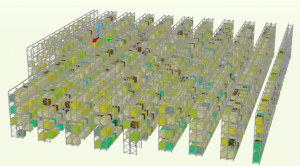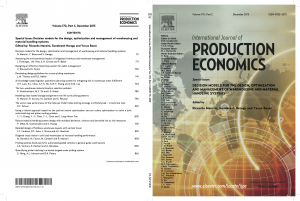Riccardo Manzini, Yavuz Bozer , Sunderesh Heragu , 2015, Decision models for the design, optimization and management of warehousing and material handling systems. International Journal of Production Economics. Volume 170, Part C, December 2015, Pages 711-716
Introduction
For many companies, warehousing and materials handling (MH) are essentially non-value added activities. Storing a product on a shelf or moving it in and out of storage racks does not add value to the product. However, both are important elements in a supply chain and play a critical role in enabling efficiency and in providing customer satisfaction (Bartholdi and Hackman, 2012 and Tompkins et al., 2003). Warehousing and material handling allow matching vendor supply with customer demand, smoothing demand for seasonal products, consolidating products, customizing product or packaging and arranging distribution activities. Furthermore, for certain service providers such as logistics/transportation companies and third-party logistics providers, part of the warehousing and MH activities including personalizing a package or repairing a product are value-add activities because their customers are willing to pay for those key services (Accorsi et al., 2014).
Warehousing and MH involve solving a large number of important design and operational problems in production/distribution systems and economics research. Both are critical topics of interest for industry, managers, practitioners, public and private research, including academic research, as they affect costs, efficiency, profit, environmental impact, risks, maintenance, safety and ergonomics.


